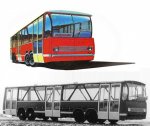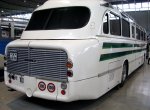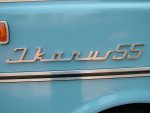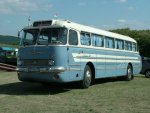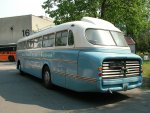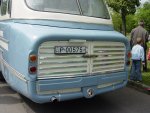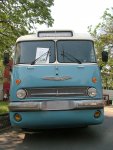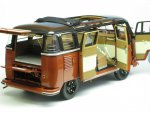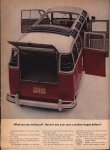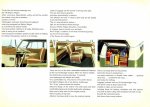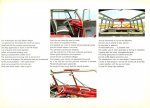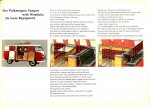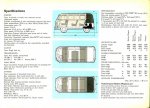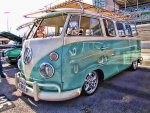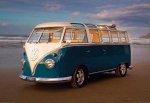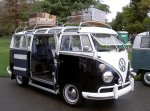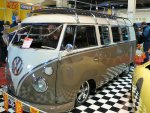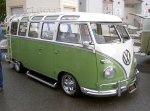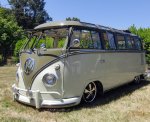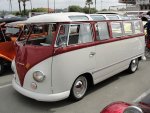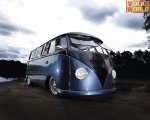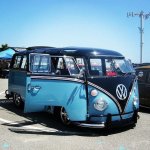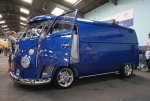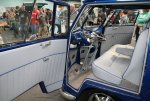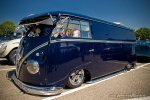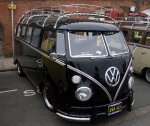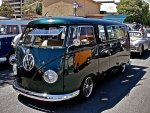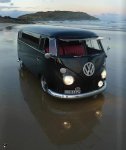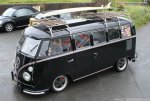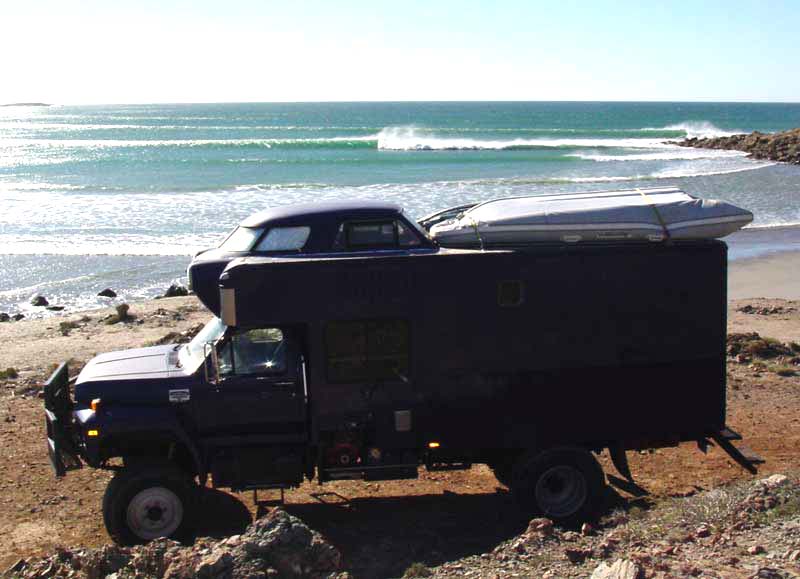dwh
Tail-End Charlie
Now let's talk about RCDON's GR-5A micro-turboshaft engine...
[AAAAAAARRRRRRGGHHHGHGHGHGHGHHGHGH!!!!! HATE HATE HATE HATE HATE!!!!!!!!!!!!! WHY does vBulletin drop my connection to the server when I try to preview a post? Why when I go back does it ALWAYS lose EVERYTHING I'VE WRITTEN SINCE THE LAST PREVIEW? WHY does it NOT auto-save like it's SUPPOSED TO? HATE@vBulletin! DIE DIE DIE DIE DIE!!!!!!!!! (Yes, I know I can cntl+a, cntl+c BEFORE I preview. But that's a bloody workaround and shouldn't be needed!)]
Ehem.
Okay, so where was I?
Oh...right.
So, a few points to ponder about the GR-5A...
He says it makes 8hp at 3600 rpm, but it'll go to 17,000 rpm and you can see he's set the tach to redline at around 15,000 rpm.
So...
17,000 rpm / 3600 rpm = 4.7
8hp x 4.7 = 37.6hp
He says it consumes 2.5 gallons of propane PER HORSEPOWER, PER HOUR (but he doesn't say at what RPM).
He's using it as a variable speed engine, mechanically direct driving the vehicle's drive train.
The 300cc Kubota diesel engine used in the NextGen and Fisher-Panda generators is a SEVEN HP engine, and can support a continuous load of 3.5 kva running at 2850 rpm in the NextGen, and 4 kva at 3600 rpm in the FP.
37.6hp / 7hp = 5.37
So the main thing to keep in mind, is that the GR-5A is MORE THEN FIVE TIMES BIGGER than what I had in mind. But since I had in mind using two for redundancy, let's say it's 2.5 times bigger.
Food for thought:
Altitude schmaltitude.
It uses a COTS (Hiya Suave!) turbo with oiling, so it's going to A) last forever and B) not give a crap about rough roads. Air bearings are a NON-ISSUE.
A smaller design, call it a GR-2.5A [Edit: Whoops. Should say GR-1.25a.] could be fit into the spaces between the wheels outside the frame in saddlebag configuration.
(I know biotect, that you like that space for storage, but you could use your pullout drawer in the front for a toolbox. With the turbines mounted down low on the sides, you can run your ducting up and down and back up again to the max height of the vehicle. Say the vehicle is 3.3m (per Steven Stewart), then you could have as much as (roughly) 10m of ducting to silence the little monsters. AND by putting them in soundproof AND watertight compartments, with snorkeling for the air, you don't have to pressurize the generator box the way Unicat does.)
You could easily build the GR-1.25A [Edit: Corrected.] to run on (yech) diesel. It WON'T wear out or break down or otherwise act flaky or have a shortened life from burning diesel. The turbo used in that design is FROM a bloody diesel in the first place, and the combustion chamber is certainly NOT going to care what it burns. Please, diesel+turbine=BAD is just not true. For SOME turbine designs, okay, sure - but certainly NOT for all turbine designs.
Also, (in a design to run on diesel) you can just run the fuel through a heater exchanger before it hits the engine. For startup, put an electric heating element in the fuel line. Once it's up and running, it'll keep running. Forget about Jet Fuel...don't need it.
I could see an oil cooler on the GR-5A, but I didn't see an *aftercooler*. (Not sure if it's possible with that sort of engine, but I think it should be.)
You could easily run the exhaust through a Thermo 90 heat exchanger (or a couple of them in series if need be).
Efficiency can be improved. You could simply line the outside of the exhaust system with Peltier Junctions or one of the newer thermo-electric materials. Not cheap of course, and not terribly efficient TODAY, but getting better. (Certainly allowable for a brainstorm thesis vehicle.) So that 70% heat/30% electricity ratio is NOT set in stone.
Now again, I'm talking about drive a little, charge a lot, and drive a little, process water into hydrogen a lot. I'm NOT talking about driving a giant vehicle 8 hours/day, day after day.
Also, everyone should keep in mind the main point of "range extender"; the vehicle is designed to drive MAINLY on battery power, NOT to drive MAINLY on the turbine electrical generation plant. In a "range extender", the generation plant is really nothing more than an "APU" for battery charging.
This is DIFFERENT than what those bus guys and Freightliner were shooting for. They were shooting for driving the vehicle MAINLY from the turbine power plant, in order to *hopefully* increase fuel economy.
[AAAAAAARRRRRRGGHHHGHGHGHGHGHHGHGH!!!!! HATE HATE HATE HATE HATE!!!!!!!!!!!!! WHY does vBulletin drop my connection to the server when I try to preview a post? Why when I go back does it ALWAYS lose EVERYTHING I'VE WRITTEN SINCE THE LAST PREVIEW? WHY does it NOT auto-save like it's SUPPOSED TO? HATE@vBulletin! DIE DIE DIE DIE DIE!!!!!!!!! (Yes, I know I can cntl+a, cntl+c BEFORE I preview. But that's a bloody workaround and shouldn't be needed!)]
Ehem.
Okay, so where was I?
Oh...right.
So, a few points to ponder about the GR-5A...
He says it makes 8hp at 3600 rpm, but it'll go to 17,000 rpm and you can see he's set the tach to redline at around 15,000 rpm.
So...
17,000 rpm / 3600 rpm = 4.7
8hp x 4.7 = 37.6hp
He says it consumes 2.5 gallons of propane PER HORSEPOWER, PER HOUR (but he doesn't say at what RPM).
He's using it as a variable speed engine, mechanically direct driving the vehicle's drive train.
The 300cc Kubota diesel engine used in the NextGen and Fisher-Panda generators is a SEVEN HP engine, and can support a continuous load of 3.5 kva running at 2850 rpm in the NextGen, and 4 kva at 3600 rpm in the FP.
37.6hp / 7hp = 5.37
So the main thing to keep in mind, is that the GR-5A is MORE THEN FIVE TIMES BIGGER than what I had in mind. But since I had in mind using two for redundancy, let's say it's 2.5 times bigger.
Food for thought:
Altitude schmaltitude.
It uses a COTS (Hiya Suave!) turbo with oiling, so it's going to A) last forever and B) not give a crap about rough roads. Air bearings are a NON-ISSUE.
A smaller design, call it a GR-2.5A [Edit: Whoops. Should say GR-1.25a.] could be fit into the spaces between the wheels outside the frame in saddlebag configuration.
(I know biotect, that you like that space for storage, but you could use your pullout drawer in the front for a toolbox. With the turbines mounted down low on the sides, you can run your ducting up and down and back up again to the max height of the vehicle. Say the vehicle is 3.3m (per Steven Stewart), then you could have as much as (roughly) 10m of ducting to silence the little monsters. AND by putting them in soundproof AND watertight compartments, with snorkeling for the air, you don't have to pressurize the generator box the way Unicat does.)
You could easily build the GR-1.25A [Edit: Corrected.] to run on (yech) diesel. It WON'T wear out or break down or otherwise act flaky or have a shortened life from burning diesel. The turbo used in that design is FROM a bloody diesel in the first place, and the combustion chamber is certainly NOT going to care what it burns. Please, diesel+turbine=BAD is just not true. For SOME turbine designs, okay, sure - but certainly NOT for all turbine designs.
Also, (in a design to run on diesel) you can just run the fuel through a heater exchanger before it hits the engine. For startup, put an electric heating element in the fuel line. Once it's up and running, it'll keep running. Forget about Jet Fuel...don't need it.
I could see an oil cooler on the GR-5A, but I didn't see an *aftercooler*. (Not sure if it's possible with that sort of engine, but I think it should be.)
You could easily run the exhaust through a Thermo 90 heat exchanger (or a couple of them in series if need be).
Efficiency can be improved. You could simply line the outside of the exhaust system with Peltier Junctions or one of the newer thermo-electric materials. Not cheap of course, and not terribly efficient TODAY, but getting better. (Certainly allowable for a brainstorm thesis vehicle.) So that 70% heat/30% electricity ratio is NOT set in stone.
Now again, I'm talking about drive a little, charge a lot, and drive a little, process water into hydrogen a lot. I'm NOT talking about driving a giant vehicle 8 hours/day, day after day.
Also, everyone should keep in mind the main point of "range extender"; the vehicle is designed to drive MAINLY on battery power, NOT to drive MAINLY on the turbine electrical generation plant. In a "range extender", the generation plant is really nothing more than an "APU" for battery charging.
This is DIFFERENT than what those bus guys and Freightliner were shooting for. They were shooting for driving the vehicle MAINLY from the turbine power plant, in order to *hopefully* increase fuel economy.
Last edited:




